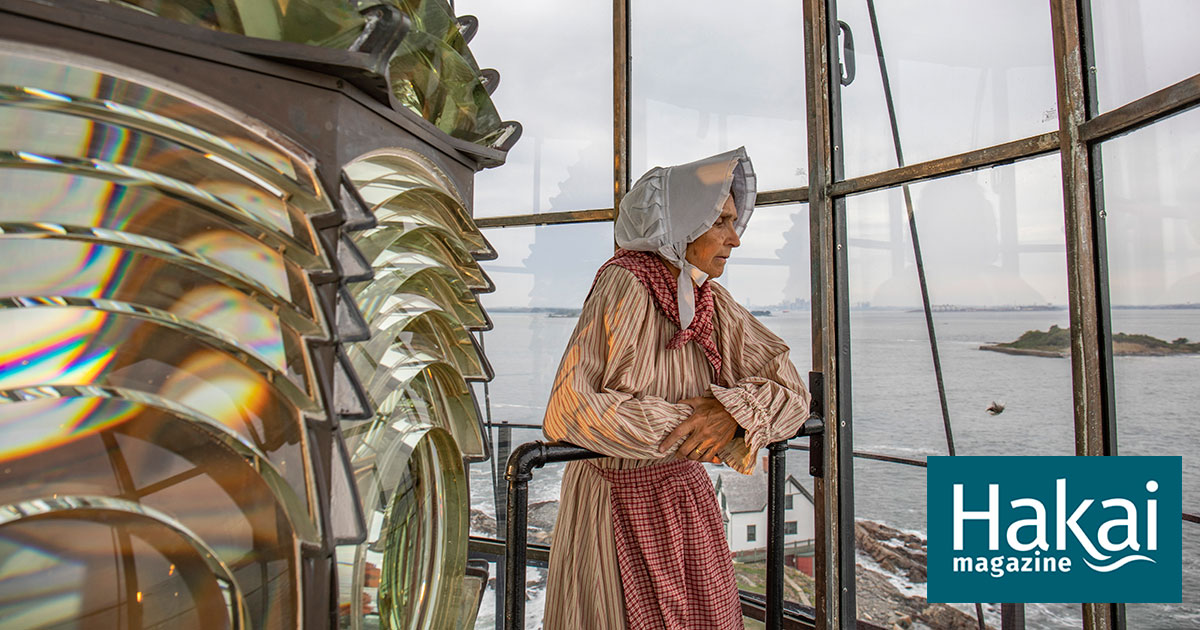Retiring Female Lighthouse Keeper of Boston Light on Little Brewster Island
Core Concepts
Snowman reflects on her 20-year tenure as the last official lighthouse keeper in the US, highlighting the challenges and joys of her unique role.
Abstract
Sally Snowman, the first female lighthouse keeper of Boston Light, shares her experiences and reflections as she prepares to retire after two decades of service. From maintaining the historic lighthouse to commuting by boat twice a week, Snowman's dedication and connection to Little Brewster Island shine through. Despite facing challenges like aging buildings and unpredictable weather, she remains committed to preserving the spirit of the lighthouse while preparing for a new chapter post-retirement.
A Lighthouse Keeper Hangs Up Her Bonnet | Hakai Magazine
Stats
Sally Snowman has served as the keeper and historian of the 307-year-old Boston Light for 20 years.
She commutes by boat twice a week from North Weymouth to Little Brewster Island.
The light was automated in 1998.
The second-order Fresnel lens was installed in 1859.
Little Brewster Island is about the size of a football field.
Quotes
"I think one of the reasons why I am a healthy 71-year-old [now 72] is because of the spirit of the lighthouse." - Sally Snowman
"Every sunrise, every sunset was different. Every day was different." - Sally Snowman
Key Insights Distilled From
by Hakai Magazi... at hakaimagazine.com 02-26-2024
https://hakaimagazine.com/videos-visuals/a-lighthouse-keeper-hangs-up-her-bonnet/
Deeper Inquiries
How does Sally Snowman's story challenge traditional gender roles in historically male-dominated professions?
Sally Snowman's story challenges traditional gender roles by becoming the first female lighthouse keeper at Boston Light, a role historically dominated by men. Her dedication and expertise in maintaining the lighthouse for 20 years showcase that women are equally capable of excelling in traditionally male-dominated professions. By breaking barriers and proving her competence as a keeper and historian, Snowman paves the way for more inclusivity and diversity in such roles.
What impact does environmental conservation have on historical sites like Little Brewster Island?
Environmental conservation plays a crucial role in preserving historical sites like Little Brewster Island. Protecting the island's ecosystem ensures that its natural beauty remains intact for future generations to appreciate. Additionally, conservation efforts help safeguard the habitats of wildlife species, such as nesting gulls, which contribute to the island's biodiversity. By promoting sustainable practices and minimizing human impact on these sites, environmental conservation ensures their longevity and cultural significance.
How can individuals preserve cultural heritage while adapting to modern technological advancements?
Individuals can preserve cultural heritage by leveraging modern technological advancements to document, protect, and promote historical sites. Digital tools such as virtual reality tours, online archives, and interactive exhibits enable people worldwide to access and learn about cultural heritage remotely. Incorporating technology into preservation efforts allows for better conservation practices while reaching a broader audience. Balancing tradition with innovation helps maintain cultural authenticity while embracing contemporary methods of storytelling and engagement.
0
